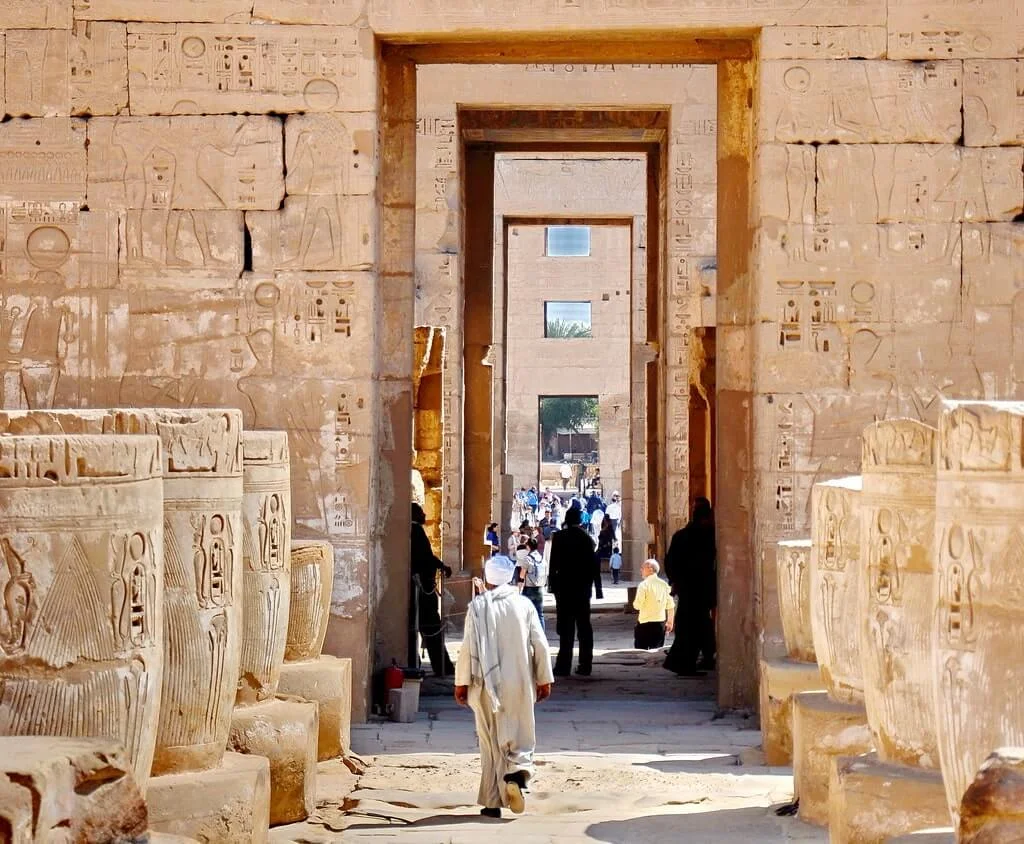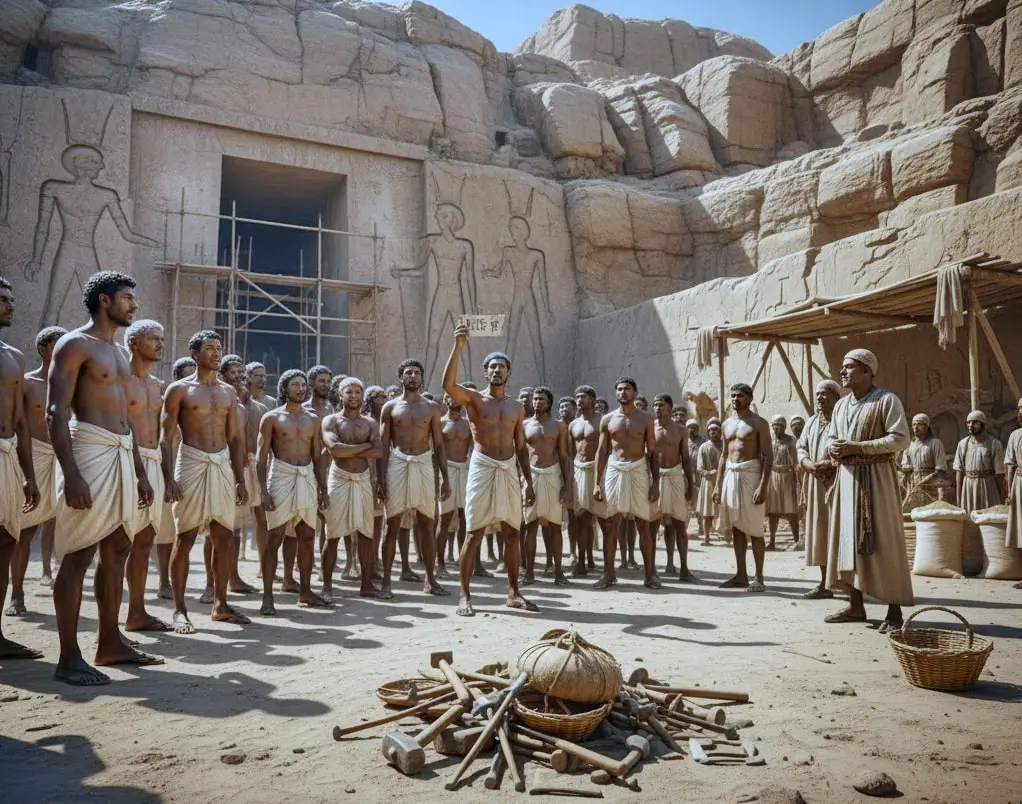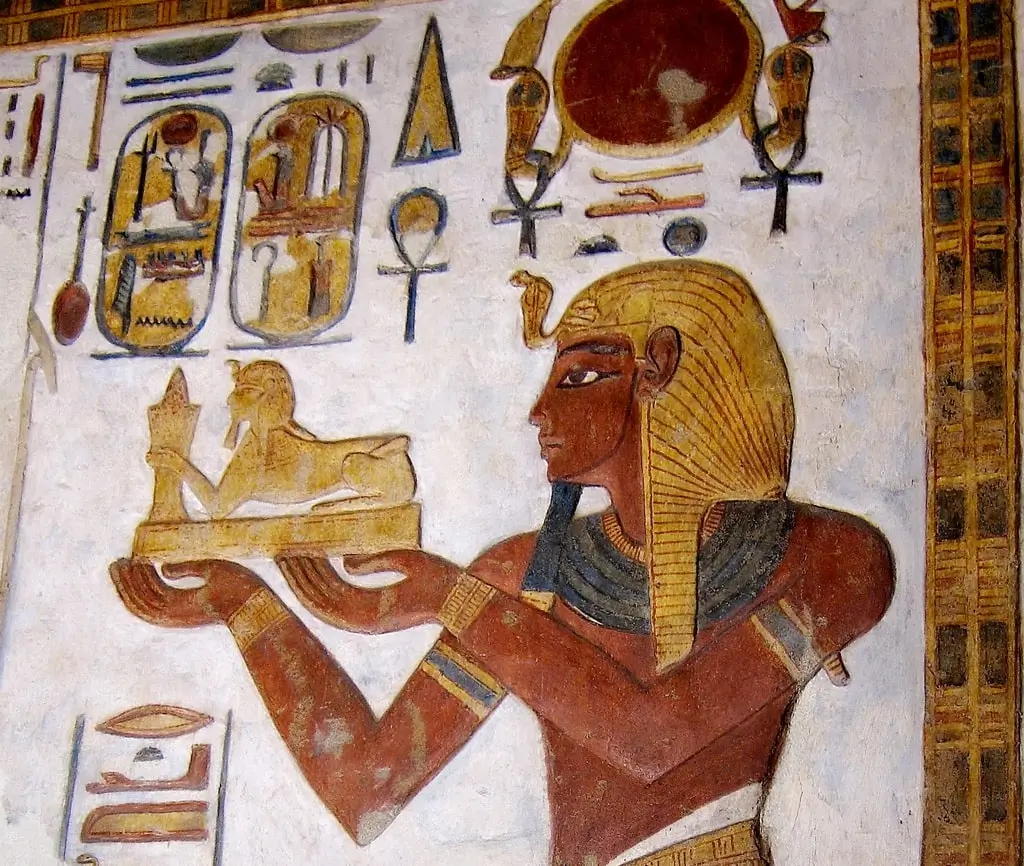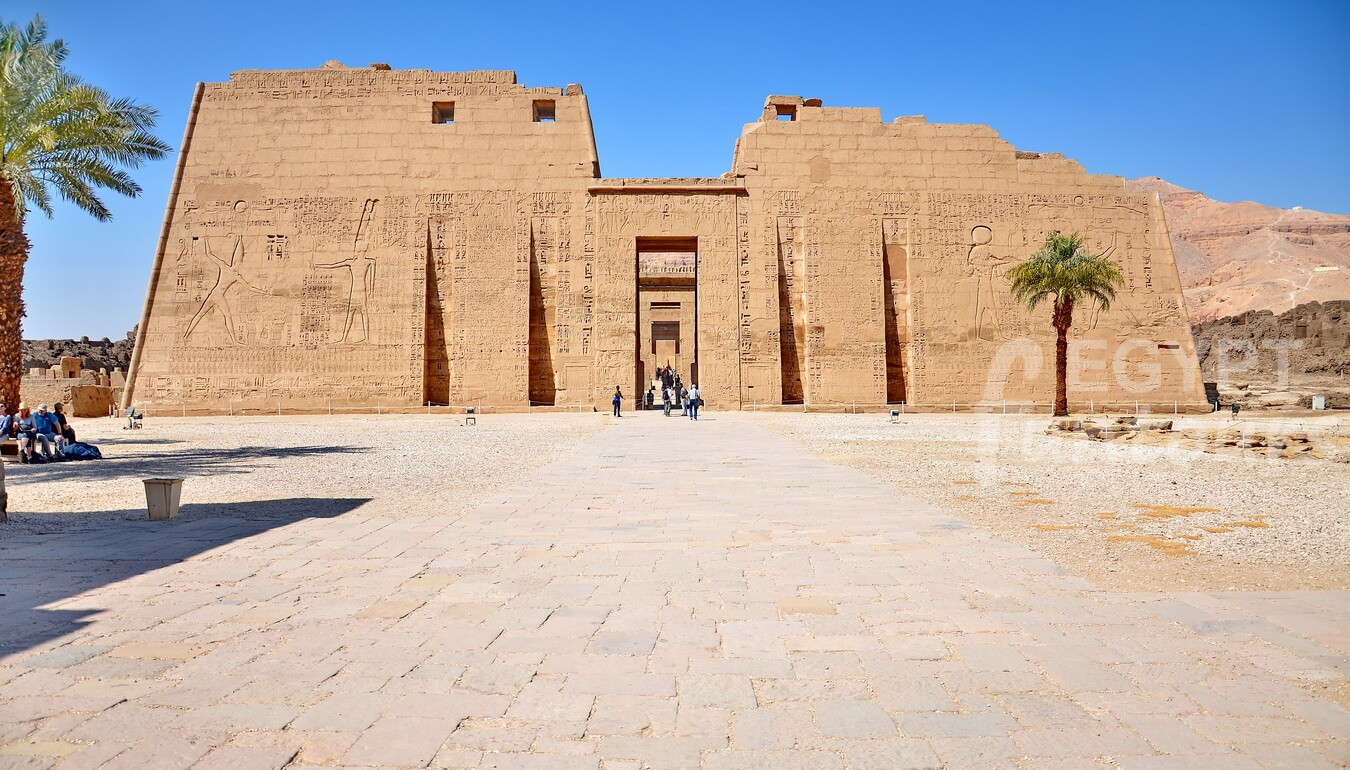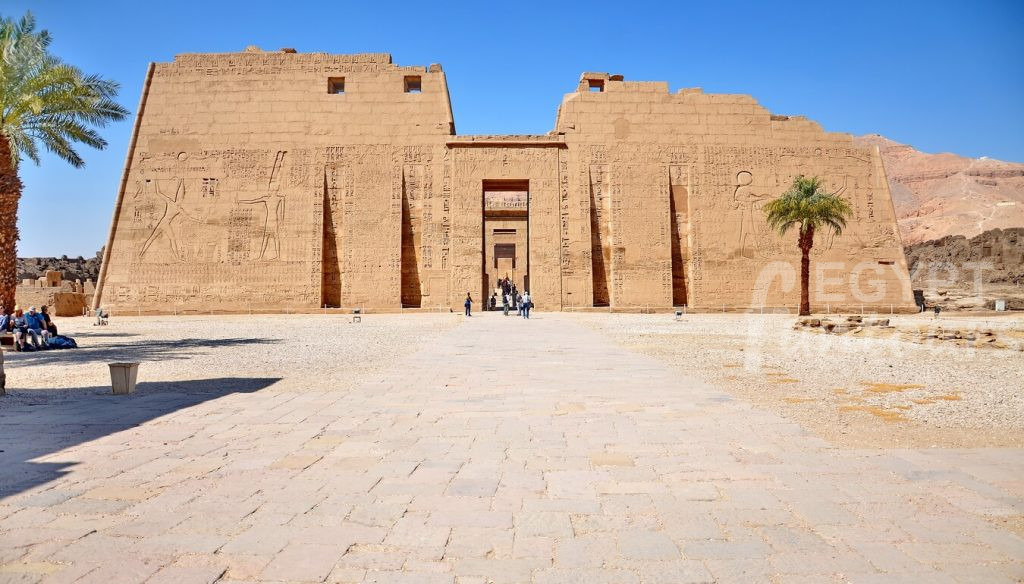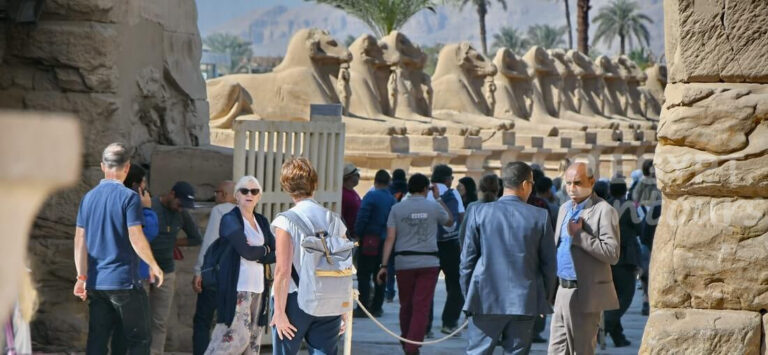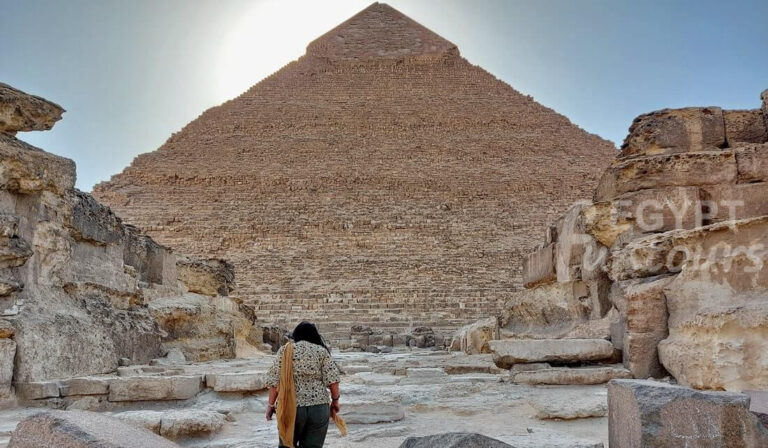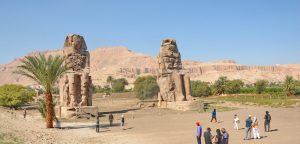If you have time for one “hidden gem” on the Luxor West Bank, make it this one.
Welcome to Medinet Habu, the Mortuary Temple of Ramesses III. This is not just a temple; it’s a colossal, 8-hectare (20-acre) fortress complex that feels like an ancient, walled city. It is, without a doubt, one of the largest, most impressive, and best-preserved temple complexes in all of Luxor.
While Karnak and Luxor Temples are vast, Medinet Habu feels more complete. You can still see the massive, 7-meter-high, mud-brick enclosure wall that surrounds the entire site.
This was the last great mortuary temple built in the New Kingdom, and it served as a spiritual center, a palace, a treasury, and a fortress. But most importantly, it is a 3,000-year-old history book in stone, telling the epic story of the pharaoh who saved Egypt from the “end of the world.”

